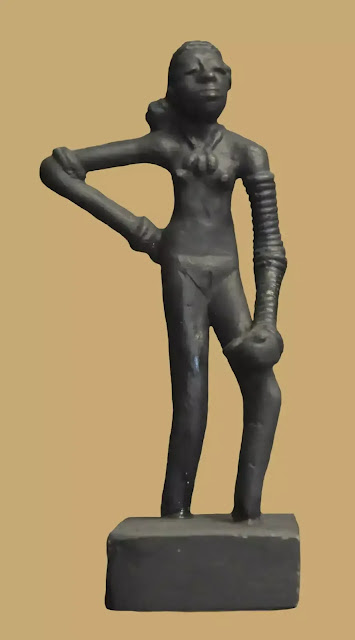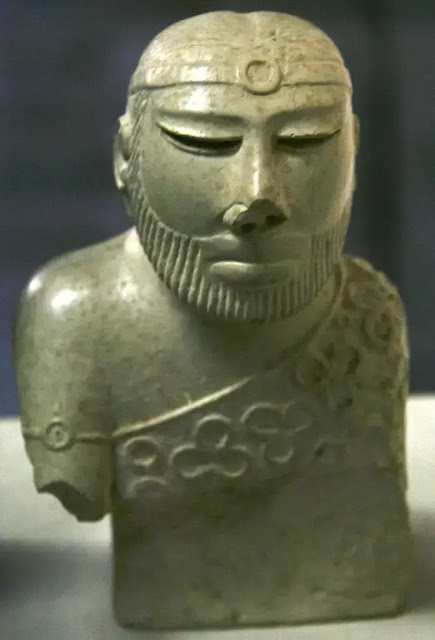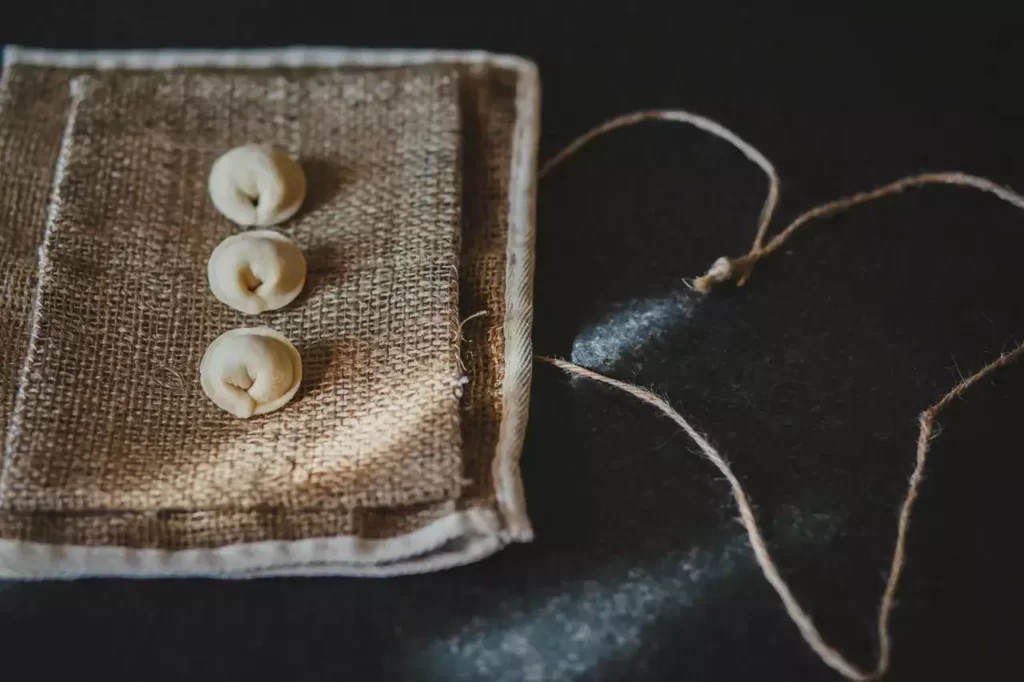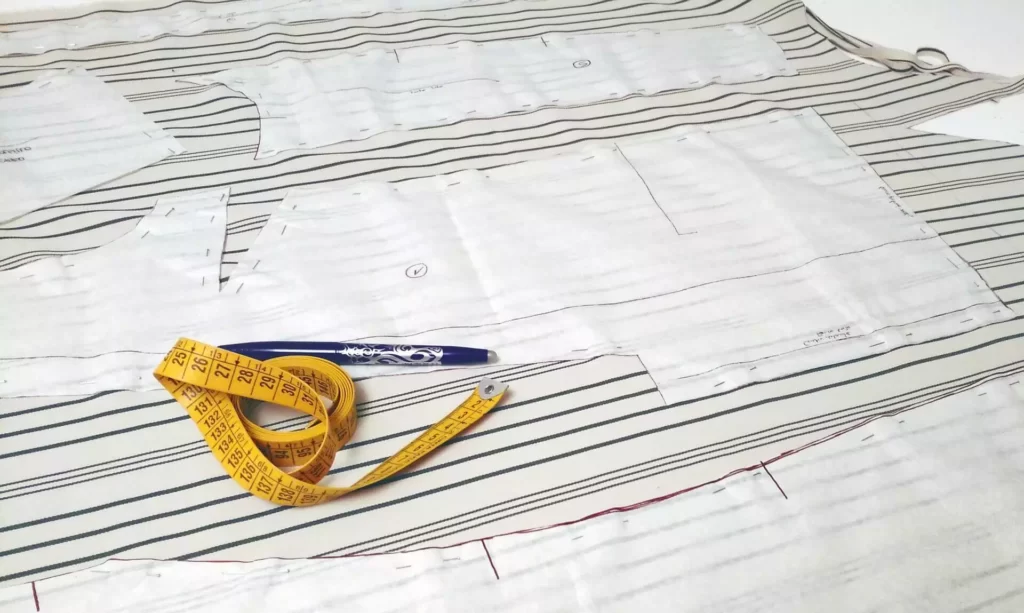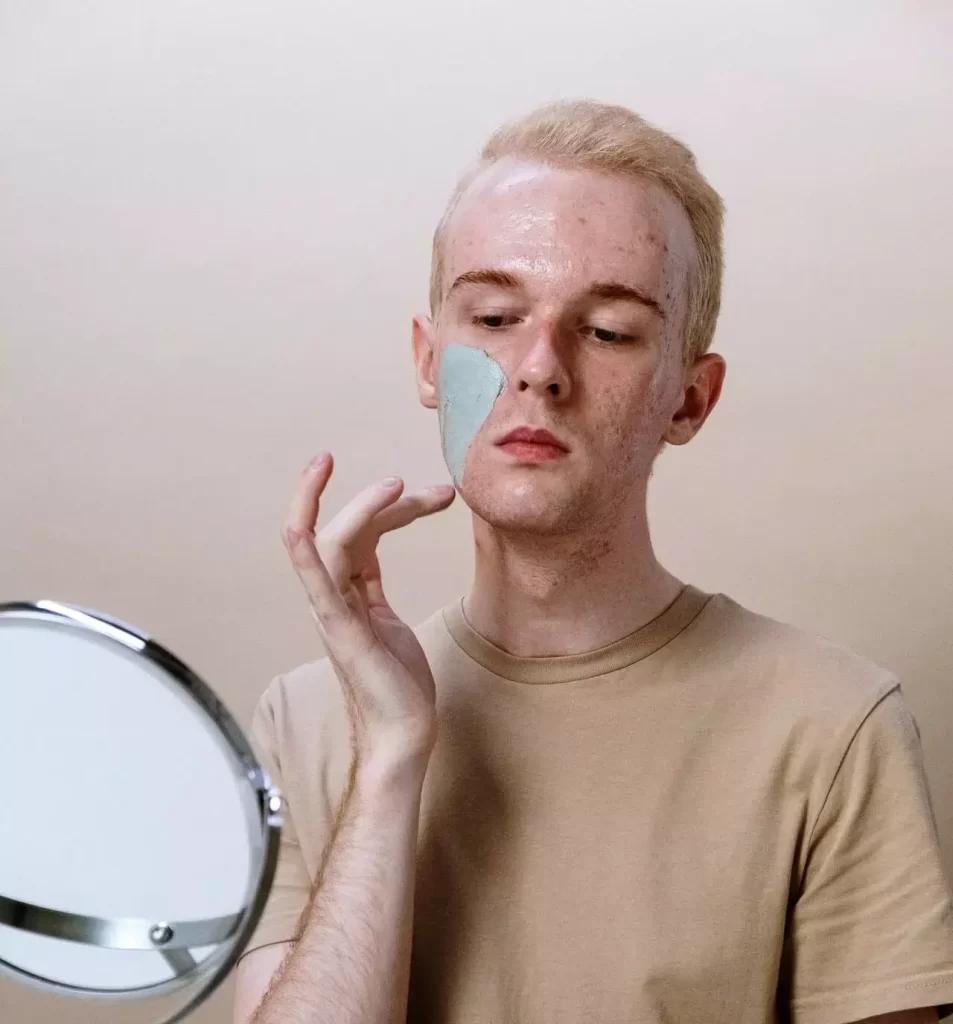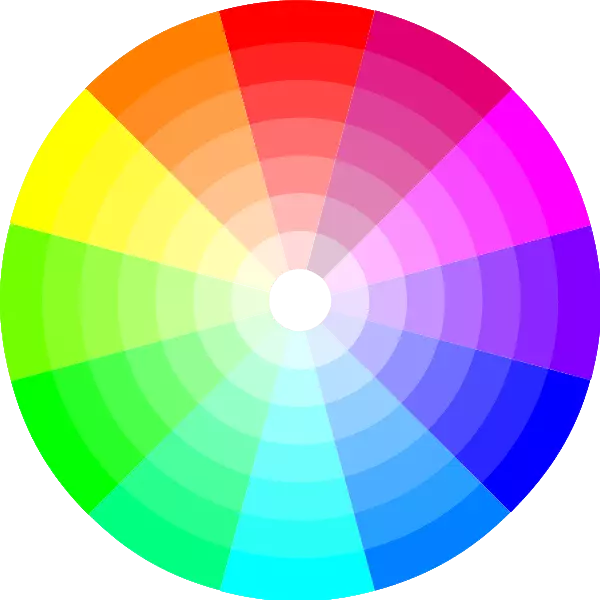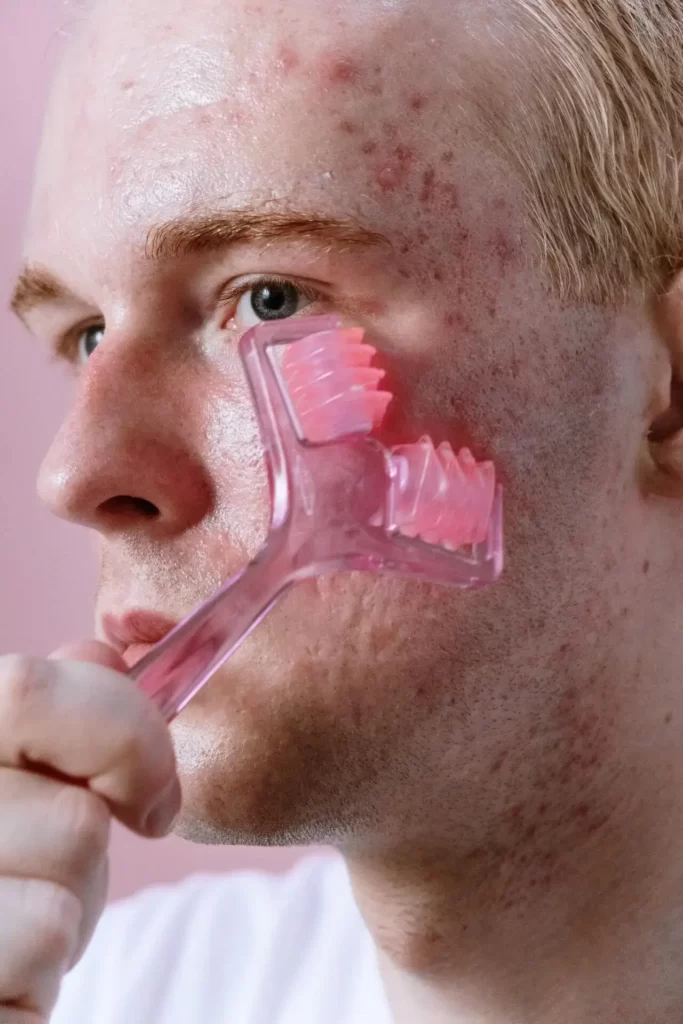I researched and collected a short article on the history of clothes in India and different clothes throughout the historical eras and how do we get to know about the Historical clothes of India.
How do we know about History of Clothes in India?
Indian clothing had been discovered from statuettes found in Indus Vally, cave paintings, sculptures, and from buildings like temples and monuments.
- In 1957 archeologists uncovered 243 Bhimbetka Rock Shelters covered with significant paintings.
- The paintings were from the Paleolithic and Mesolithic periods about hunting, lifestyle. In those paintings, figures appeared naked or wearing loincloths.
indus valley civilization
It was the first urban civilization in India and this continued from 2300 BCE to 1700 BCE (Before Common Era). Harappa and Mahenjo-Daro developed an advanced revolutionary civilization. Many utensils, cutleries, toys, crockeries were found with animal and human figures painted on those which gives us information about the clothing during this civilization.
Portrayals from the Harappan civilization show that the main clothing was draping a long cloth around their body like for men, they draped a cloth around their waist and tied it at the back almost like the traditional cloth dhoti. At that time, Turbans were one of the accessories for males which showed the status of the dresser. Higher-class men used to drape a robe over their left shoulder to show their extravagance just like the sculpture Preist King.
Women used to wear heavy earrings with heavy necklaces embellished with gemstones. Mother Goddess statue from Delhi National Museum suggests that females used to wear trousers and tunics with their short skirts and even men also started wearing tunics, trousers with an upper waistband.
Preist King
Priest kings draped here a shawl under the right arm and fall over the left shoulder which is decorated with a three-lobe leaves design, double circle, and single circle motifs (pattern). His right upper arm has an ornament as known from this sculpture and also that the upper classes probably did not keep mustaches and neatly combed their hair and he also tied a headband at the back in a bow style.
Dancing Girl
Dancing Girl portrays a naked young girl standing with one arm on her hip with confidence and on her upper left arm, she is wearing many bangles and also a necklace on her neck. She has a bun with her hair in the figure. She is a figure of a dancing girl though regular women used to were short skirts while priestesses wore long skirts and royal high-status women are depicted as wearing detailed hairstyles with ornaments.
post vedic period
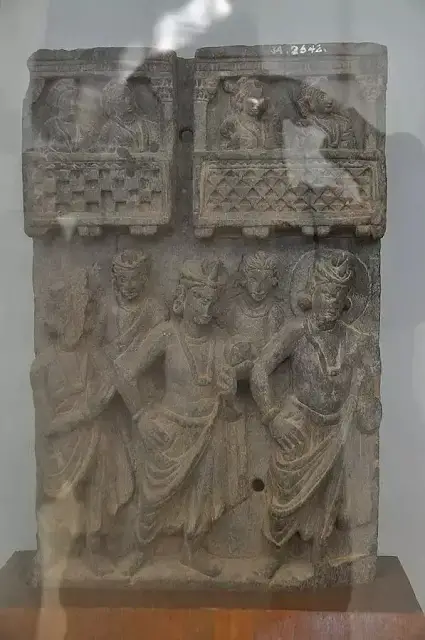
Firstly the Vedic period was between 1200-600 BCE and after that, the post-Vedic period started and continued till 323 BCE. We got information about post-Vedic period costumes from wood, ivory, metal sculpture, and literature.
- These refer that the costumes were unstitched draped and wrapped around the body called Uttariya and Antariya at the bottom.
- In addition, Antariya had been wear in different styles: Hathisondaka, Machhavalaka, Chaturkarnaka.
- Beside Antariya was consists of Paridhana which was a lower garment and they styled it with pleats in the front and tied with a belt called Mekhala.
- At that time people had ideas about dyes and adapted the technique of bleaching.
- Wealthy people used to wear leather shoes, embellished with gold, silver jewels on the other hand poor people used to wear loincloth where as wealthy people wore ankle length garment.
Maurya & sunga period
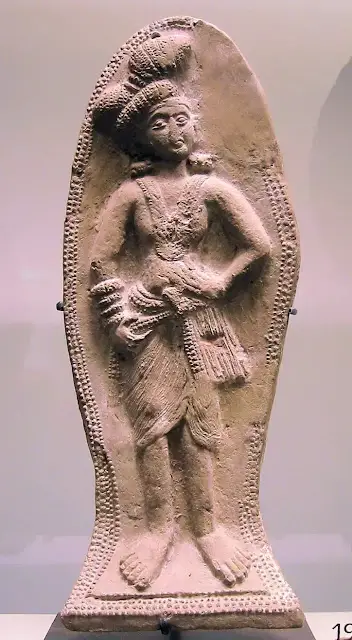
This period was from 321 BCE to 72 BCE. Maurya period also continued the Indus styles like draping clothes, heavy earrings, and necklaces, etc.
- The men and women continued to were the same unstitched clothes Uttariya, Antariya, Kayaband. In addition, both used headwear. Women tied their hair with Uttariya similarly men twisted their hair with the turban.
- In jewelry, Necklaces were two kinds for example Kantha was short and broad on the other hand Lambanam was long with multiple strings. They used to wear Armlet called Baju, finger rings, earrings anklets, even forehead ornaments.
gupta period
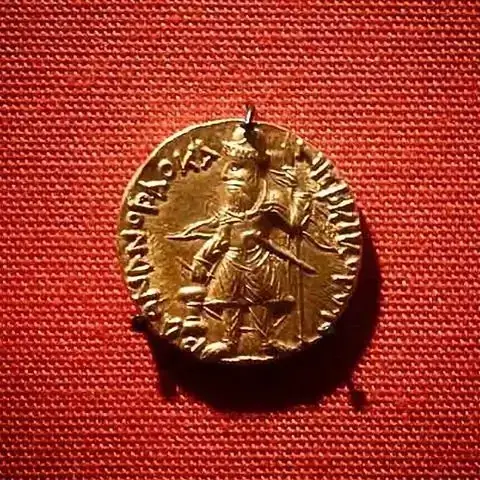
The period is 320 CE – 550 CE (Common Era).
- From coins, we knew about the heavy Parthian-Kushan clothing.
- In this era, stitched garments took priority over draped garments for instance they adopted coats, trousers, and boots for the cold climate of the north area.
- In addition, they used to wear quilted coats & tunics.
- In the royal family Kings used to wear striped silk tunic with Uttariya and wore expensive Mukuts, which was a headgear or crown more specifically.
- The Kayabandh became a plain cord, buckled in different ways.
In the women section, there was a variety of clothing.
- There was diffent styles for Antariya like kachchha, lehnga, chalanika.
- Uttariya became sheerer to flatter the dresser.
- High-status women wore long ankle-length versions of cloths of fine cotton but low-status women wore shorter clothes of cheaper material.
- They wore breast bands to support the breast area rather than to cover it.
Vijayanagar Empire
The era was 1336 CE-1565 CE.
- Women used to not wear blouses or very popular fitted blouses. For example, Kanchuka, Kanchulike, Chola, etc were some of the popular bloses. In addition Chipping was a specific tailor for making those blouses.
- Wealthy men wore the Petha which is a tall turban made of silk embellished with golds.
- They all used to wear jewelry also adorned themselves with flower garlands and perfumes made of rose water, sandalwood.
the rajputs
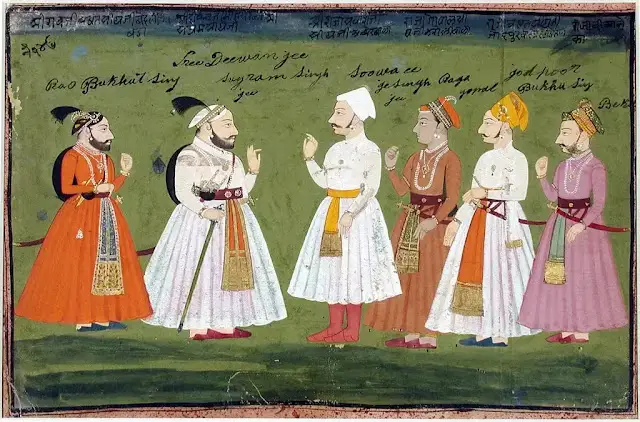
Rajputs were one of the major Hindu warrior groups from Western India including Rajasthan.
Rajput Maharajas clothing was flared long-sleeved tunic with a Chummerbund which is a belt. Also, they adorned themselves with Pagdi which is a turban, Angrakhi – a short jacket above the tunic. Most importantly their jackets had protective pads at the elbows and lower arm fringed with epaulets. They also wore a long sleeve coat like a shining tunic called Shervani. It is just a brighter version of a tunic. Rajput Maharajas also kept a mustache to show off masculinity.
Rajput ladies are often seen in transparent fabrics in paintings. In contrast, Rajput ladies mainly used to wear lehenga with Angia which is a tight-fitting top-like blouse, and with an Odhni. Besides, sarees were also a choice for them. Young girls wore Puthia on the upper part and Sulhanki on the bottom. Widows and unmarried ladies wore Polka blouses with voluminous satin, organza, silk skirts.
They also beautified themselves with various adornments. Rajput ladies wore Rakhdi on the head, Machi-Suliya at ears, and Tevata, Pattia, and Aad Necklaces. (Information taken from Here)
Men and Women wore the same footwear which was Juti, made of leather.
Here are some more alike topics you may want to read!
- ORIGIN AND FUNCTION OF CLOTHING
- TRADITIONAL CLOTHES OF ASIA
- TRADITIONAL CLOTHES OF EUROPE
- TRADITIONAL CLOTHES OF AMERICA
- TRADITIONAL CLOTHES OF AFRICA
- TRADITIONAL CLOTHES OF OCEANIA
I hope you liked it, please leave a comment (❁´◡`❁)


